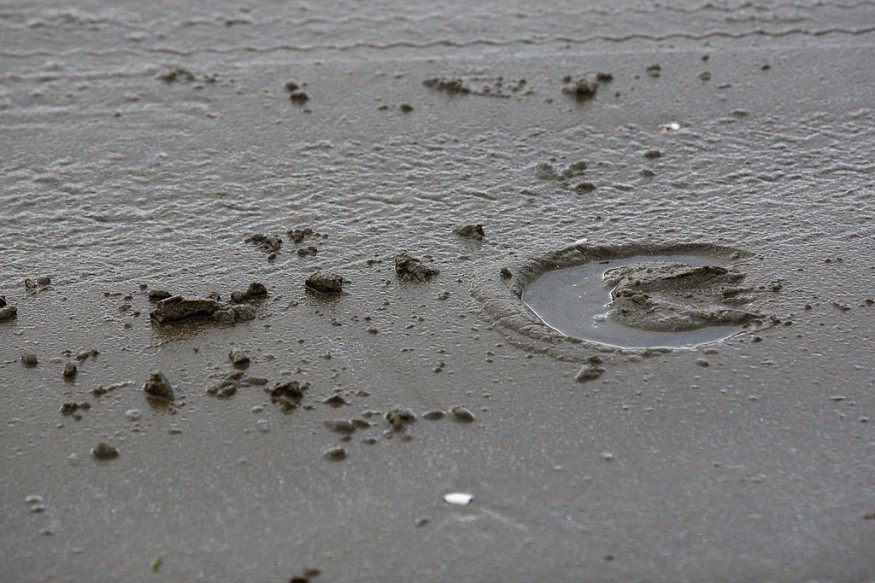
It turns out that the strange hoofprints on the ocean floor are the bite marks of a bottom-feeding fish, as discovered by scientists using superimposed photos.
Hoofprints on the Ocean Floor
Off the coast of New Zealand, these enigmatic 'hoofprints' on the seafloor are not actually the product of a legendary underwater horse galloping through the depths.
It turns out that there is a more scientific rationale behind it, one that sheds light on some of the more mysterious creatures lurking in the depths of the sea.
The peculiar patterns were initially spotted in 2013 by New Zealand's National Institute of Water and Atmospheric Research (NIWA) during a reconnaissance of an underwater subterranean ridge.
The Mystery of These Deep-Sea 'Hoofprints' May Finally Be Solved https://t.co/dNE5fRjZ4g
— ScienceAlert (@ScienceAlert) September 22, 2023
Nobody has been able to determine what left a scattering of impressions more than 450 meters underground throughout the years since that time.
Researchers at NIWA have now discovered a solution that perfectly fits the enigmatic impressions.
The pointed snouts of several species of deep-sea rattail fish, also known as grenadiers (Coelorinchus), are said to perfectly match the triangle markings.
Bottom-Feeder Rattail Fish Bite Marks
The divots in the center of the sand imprints are likely central "bite marks," left by bottom-feeders as they sucked up prey by biting down on the mud.
According to NIWA experts, bite scars of this kind are extremely uncommon, if not nonexistent, considering the great depths where these rattail fish graze.
The team isn't even aware of any recorded instances of rattails engaging in their usual foraging behavior.
Some of the only proof of their actual feeding patterns comes from bite marks discovered close to New Zealand.
The fish may hunt by thrusting their snouts into the mud, likely with a brief burst of speed, prior to sucking up their prey using their downward-facing lips, according to NIWA experts who have studied the fish's nose prints.
The shallower impressions on some parts of the sand were likely left by the fish snatching a crab or a nibble off the sand's surface.
On the other hand, the deeper bites might be an attempt to dig up food that was partially buried in the sediment.
Years of Reviewing Footage
The Deep Towed Imaging System (DTIS), according to marine biologist Sadie Mills of NIWA, enables researchers to examine the seafloor in exquisite detail. They frequently see markings in the silt when reviewing this footage, but sadly, most of them are unidentified by science, and scientists can only speculate as to how they might have been formed, let alone come up with solid evidence.
She went on to remark that it was awesome to finally have proof that the rattails they had seen on the video were, in fact, feasting in the muck. It's like receiving a pleasant treat after years of DTIS video-watching.
Rattails have acquired sharp eyesight, great sniffing power, and highly sensitive barbels because finding food in deep, dark water is difficult work.
The fish use these senses as they cruise slightly above the seafloor in search of crabs, worms, and other fish to feed on.
Also Read : 5 Terrifying Amazon River Creatures to Avoid
Bite Marks on the Ocean Floor
Three species' heads matched the impressions when researchers superimposed several photographs of rattail fish on the underwater "hoofprints."
Two impressions fit very closely with the heads of two different fish: one was called the oblique-banded rattail or rough-head whiptail (Coelorinchus aspercephalus), while the other species was called the two-barred whiptail (C. biclinozonalis). However, many of the marks were too poorly defined to be connected to a specific species of rattail fish and too little is known about either species.
According to researcher Darren Stevens, the distinctive head features of these types of rattails allow them to forage off the seafloor, a feat that other species cannot. These rattails have a lengthy snout and an extending mouth located on the underside of their head.
Stevens was pleased by how closely the head profile photographs matched the impressions, although ough Steven claims that he had a hunch that it might work.
NIWA researchers, encouraged by their discovery, are now hoping to use these markings to pinpoint crucial habitats and feeding areas for these slippery fish.
Related Article : Glow-in-the-Dark Sharks in Deep Seas Hunt Using their Glowing Belly
© 2025 NatureWorldNews.com All rights reserved. Do not reproduce without permission.




